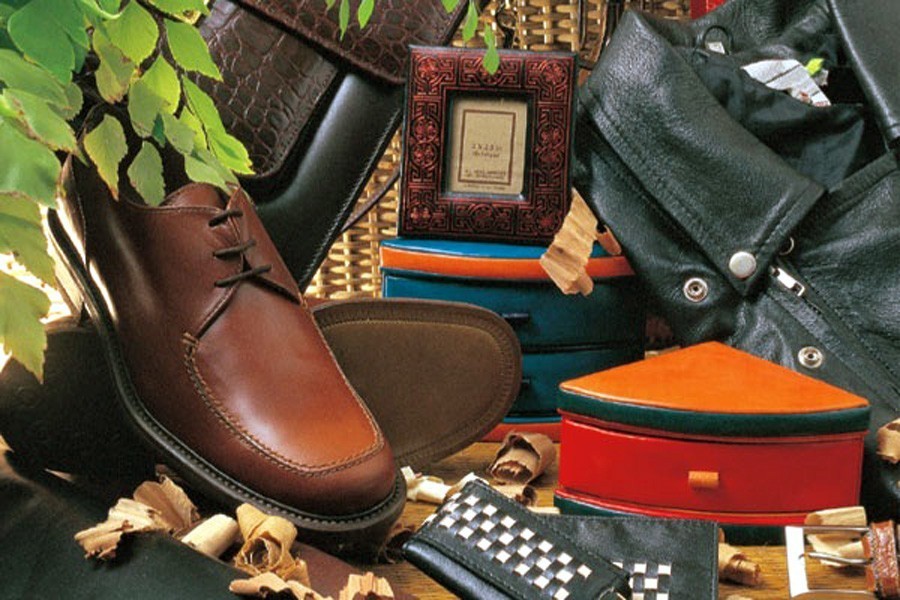The International Finance Corporation (IFC) has prepared a roadmap outlining a strategy for enhancing the country's leather sector exports. Submitted to the government recently, the roadmap sets a vision of ranking Bangladesh amongst the top 10 leather export countries in the world by 2025 from the present minuscule share.
The IFC roadmap, prepared for a period until 2025, said Bangladesh has a share of only 0.5 per cent in the world leather trade. It suggested planned and coordinated intervention from the government for raising exports in the leather sector. It is high time for the intervention, it noted.
According to the roadmap, Bangladesh needs to produce high-end leather products, attract massive domestic investment, and enhance the capacity of private sector manufacturers.
What the country needs to do is carry out aggressive marketing campaign in the global leather market, establish effective linkage with major brands and retailers, and attract foreign direct investment (FDI) and joint venture from top actors of the leather goods and footwear market.
By 2021, IFC projected that earnings from exporting 108 million pairs of footwear will fetch $1.5 billion while 90 million pieces of leather goods will also bring $840 million. Some 720 million square feet leather, an additional $1.1 million additional investment, 300 acres of land, and 40 megawatt of electricity will be required to do so. This is likely to create employment opportunities for 0.2 million people by 2021.
Data shows that export earnings from leather and leather goods were $1.13 billion in fiscal year 2014-15, which dropped to $1.09 billion in fiscal year 2017-18. The overall export income from the leather sector fell by 8.0 per cent during the period.
The government, in the meantime, prepared a draft policy for leather and leather goods sector to help raise export earnings to US$5.0 billion and contribution to Gross Domestic Product (GDP) to 2.5 per cent by 2021, officials said.
The Ministry of Industries has recently finalised the draft of 'Leather and Leather Goods Development Policy 2019'. The draft policy has been placed on the website seeking opinion from different quarters. It was finalised through discussion with all the stakeholders. The gazette notification on the final policy is expected to be issued later this month, and the policy will be reviewed every five years. In 2017, the government announced leather and leather goods as the product of the year.
The draft policy aims at utilising the potentials of private sector, creating opportunities for new entrepreneurs and employment, attracting more investment, and thus increasing export earnings.
Leather industry is yet to attain competitiveness in terms of quality and export. It sought government's support equivalent to that given to the RMG sector. Availability of hides and skins, their fine grain pattern, uniform fibre structure and competitive labour cost are among the advantages of Bangladesh.
There is a huge potential to attract both foreign and local investments in the sector, once it turns into an environment-and business-friendly one. But the sector faces problems in the collection of hides and skins and processing of the same. In fact, difficulties start from the slaughtering stage.
The draft policy suggested formulating laws, fixing provisions of setting up modern butcher zones for animal slaughtering instead of doing the same here and there. It also focused on installing cold storages for preservation of raw hides, and building modern and environment-friendly infrastructure for effective waste management of slaughtering houses.
There is also a proposal to set up a central bonded warehouse to reduce lead time along with cost of production, and ensure availability of raw materials for the sector. There should be short, medium and long-term action plans through hiring local and foreign consultants, mainly to enhance capability in environment management.
Last fiscal year, the country exported $1.1 billion worth of footwear and other leather goods -- using only 30 per cent of finished leather. The remaining 70 per cent finished leather was exported, mostly to China. Finished leather fetches less than one-third of footwear: one square feet of finished leather fetches only $0.60, whereas footwear made from three square feet of finished leather brings $5.
Presently, Bangladesh has 165 footwear and leather factories, which could fetch up to $5 billion in export receipts if they were compliant and used modern technologies, according to industry insiders. Receipts from leather goods, footwear and finished leather exports have been crossing the $1.0 billion mark for the past five years, but they are not growing further.
Tanners and trade union leaders have, in recent times, expressed concern over 'motivated and baseless' campaign against Bangladesh's leather industry by a section of international media.
The government and environmentalists have long been pursuing the relocation of tanneries. Now the process is almost complete. Larger factories have already started operation in the new location. Some of the factories are well-organised and up to the mark. They can be compared with the best factories in the developed countries.
The country needs efficient manpower and technology to earn more from exports. Compliance and quality are the major factors for attracting foreign buyers and not cheap labour. Bangladesh's main export markets are: the EU, the US, Australia, Japan, Singapore and South Korea.
All said and done, what the country needs at this stage is to put emphasis on preparing a practical roadmap for an integrated and sustainable growth of the leather industry.


